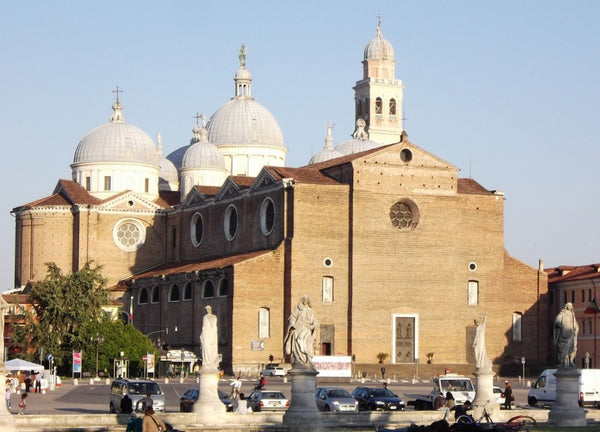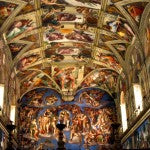From the towering spires of the Gothic era, church architecture shifted as society rediscovered various wonders of the ancient world. This was during the classical antiquity period. And the fact is, Italy did not inherit Gothic architecture that much and managed to develop a distinctive style.
The era of discovery and enlightenment was the Renaissance and has since produced many famous personalities such as Leonardo da Vinci.
The Renaissance started in Italy during the 15th century. Due to the interest of many who are from Northern Europe, the movement began to spread throughout the continent.
Below are common features of Renaissance architecture.
Structural planning
 Image source: Wikipedia
Image source: Wikipedia
A distinctive style in the structural planning of Renaissance buildings is the use of a square, symmetrical appearance based on a module the width of an aisle.
Facades
 Image source: Panoramio
Image source: Panoramio
Around the vertical axis, facades are also symmetrical. They are capped by pediments and organized by a series of pilasters, arches, and entablatures.
Another feature is that columns and windows progress towards the center.
Columns and pilasters
 Image source: Wikipedia
Image source: Wikipedia
Used were Tuscan, Doric, Ionic, Corinthian, and Composite columns (in that order) and may either be structural or decorative.
Domes
 Image source: MariaMilani.com
Image source: MariaMilani.com
Domes were in use once again, not only serving as spectacles from the outside, but as a way to roof smaller pieces from the inside.
Ceilings
 Image source: bc1325.wordpress.com
Image source: bc1325.wordpress.com
Unlike Gothic ceilings, Renaissance ceilings are somewhat flat and painted with images.
Examples of Renaissance Architecture
St. Peter’s Basilica, Vatican City (1626 AD)
 Image source: Wikipedia
Image source: Wikipedia
Basilica di San Lorenzo, Italy (1470 AD)
 Image source: Urlaubsziele.com
Image source: Urlaubsziele.com
Sigismund Chapel, Poland (1533)
 Image source: MarkLeaver.com
Image source: MarkLeaver.com
Basilica of S. Giustina, Italy (1489)
 Image source: Best of Padova
Image source: Best of Padova
The Renaissance indeed made waves throughout the architectural world with the revival of styles from the classical antiquity period. But it was not without development. A few centuries later, a whole new movement would rise. This movement was pushed by the Catholic Church to counter the Reformation with its use of beautiful images and astounding religious art.
It was known as the Baroque movement which gained momentum during the 17th century.
We will be talking about Baroque architecture in next week's entry


